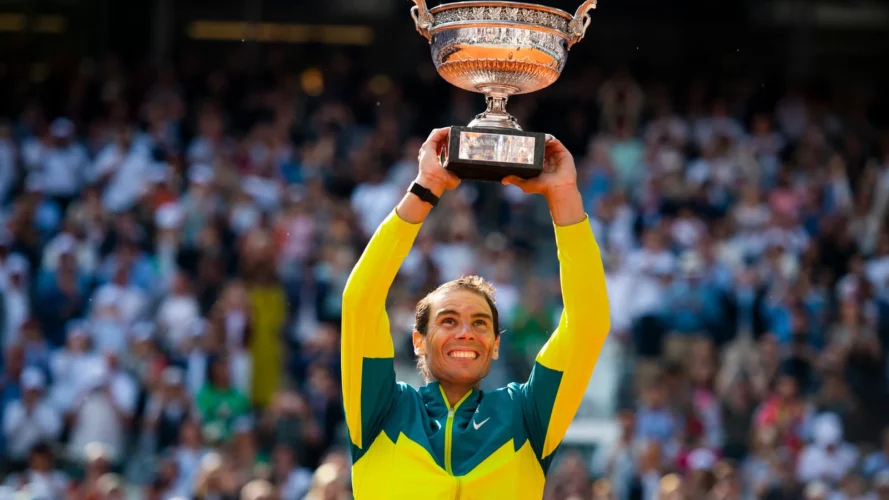Hello and welcome to our in-depth guide on the development and history of the French Open Tennis Tournament. This article will go into the extensive history of this illustrious competition, examining its beginnings, notable turning points, and the key figures that have moulded its legacy.
Join us as we travel back in time to explore the intriguing history of one of the most prestigious tennis competitions in the world.
Origins and Early Years
The French Open, also called Roland Garros, has its roots in the latter part of the nineteenth century. One of the oldest tennis championships in existence, the first competition took held in 1891.
Initially, only French tennis players were allowed to participate, and a national competition was staged.
The Roland Garros Stadium
The French Open has come to be identified with its illustrious setting, the Roland Garros Stadium in Paris.
The arena, which bears the name of the illustrious aviator Roland Garros, provides an enthralling atmosphere for both players and spectators. The French Open stands out from other Grand Slam competitions thanks to its distinctive red clay courts, which present a special challenge.
Evolution of the Tournament

The French Open has undergone a number of notable changes over the years that have improved its standing in the tennis community.
Let’s examine some of the major turning points and advancements that have influenced the tournament’s progress.
Introduction of International Competitors
The French Open expanded its appeal and became recognised as a genuinely global competition when it started to accept players from other countries in the early 1920s.
This was a turning point in the history of the French Open Tennis Tournament since it allowed for a larger and more competitive field of competitors.
Expansion of the Venue
The Roland Garros Stadium received numerous additions and improvements to accommodate the French Open’s rising popularity.
In addition to improving the experience for players and spectators, these improvements aimed to increase the venue’s capacity to handle the rising demand for tickets.
Introduction of Prize Money
The French Open entered the Open Era in 1968, enabling professional athletes to compete alongside amateurs.
Prize money was added as a result of this modification, significantly enhancing the tournament’s stature and drawing elite competitors from all around the world.
Introduction of Lights and Night Matches
The French Open embraced modernity in 1991 by installing floodlights, which made it possible to play night matches for the first time.
With this innovation, the tournament’s atmosphere was improved and a wider audience was reached thanks to an increase in global viewership.
Notable Champions and Iconic Matches

The French Open has produced many famous champions throughout the course of its illustrious history, as well as enthralling matches that have entered tennis mythology. These memorable confrontations have taken place on clay courts. Let’s examine some of the tournament’s most memorable past events.
Björn Borg’s Dominance
Throughout the late 1970s and the beginning of the 1980s, the French Open was forever changed by Swedish tennis legend Björn Borg.
Borg won six French Open titles and cemented his place among tennis’ best players thanks to his extraordinary talent and unrivalled dominance on clay.
Chris Evert’s Unprecedented Success
Chris Evert, a legendary American tennis player, displayed her extraordinary talent and dependability at the French Open by winning an incredible seven singles titles.
Evert reached the heights of glory at Roland Garros with to her graceful playing style and remarkable clay court ability.
Rafael Nadal’s Reign
The incredible accomplishments of Spanish superstar Rafael Nadal must be acknowledged in order for a discussion of the French Open to be considered comprehensive.
Nadal, often known as the “King of Clay,” has dominated the competition by winning a record-breaking thirteen men’s singles titles. His unmatched supremacy on clay courts has raised the bar for tennis players in the past.
Significance and Legacy
Beyond its sporting significance, the French Open has a long history and a lasting impact. The competition has influenced culture and won over tennis fans all over the world.
Players and spectators alike display their fashionable apparel on the clay courts of Roland Garros, demonstrating the sport’s effect on fashion. In addition, a new generation of players has been motivated to perfect the clay-court tennis technique by the French Open’s distinctive playing surface.
Conclusion
As we come to a close on our tour through the French Open Tennis Tournament’s history and development, we have seen its incredible change from a domestic tournament to a widely regarded international event.
The French Open has epitomised the essence of tennis from its modest beginnings to the present and given fans amazing moments of athleticism and sportsmanship. Future generations of tennis players will continue to be motivated by its legacy, ensuring that the competition is a benchmark of excellence in the sport.
Suggested Read: Kai Havertz to Arsenal Transfer latest




